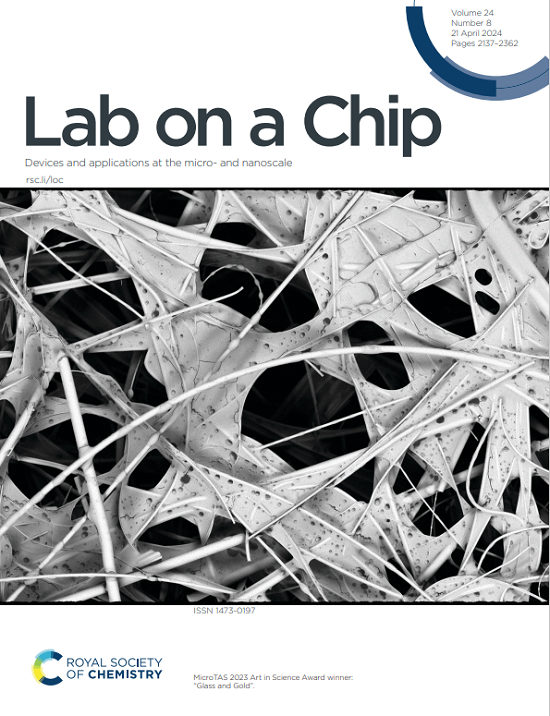可编程3DP微流控生物反应系统:自动芯片灯
IF 5.4
2区 工程技术
Q1 BIOCHEMICAL RESEARCH METHODS
引用次数: 0
摘要
护理点(PoC)设备通过实现远程诊断和治疗彻底改变了医疗保健,微流控系统在其发展中发挥着关键作用。本研究的重点是三维疏水阀的详细工程和表征,以形成新的可编程生物反应储层。使用3d打印软光刻技术,我们仔细研究了通道尺寸和表面性质对这些储层破裂压力的影响,其范围从6.4到44.8 mbar。生物反应储层以串联和并联两种配置进行了演示,为生物过程的小型化和自动化提供了通用平台。我们的研究结果强调了这些储层对各种流体样品(包括水、血液和血清)的流动进行编程的能力。此外,开发了一种便携式压力泵,以利用这些疏水阀的功能,在PoC应用中实现流体动力学的精确控制。该研究最终设计了一种集成两个连续储存器的微流控芯片,用于环介导等温扩增(LAMP)的PoC执行,以检测m痘病毒。引物在生物储存库中冻干,该系统实现了m痘DNA的可见比色检测。本文章由计算机程序翻译,如有差异,请以英文原文为准。
Programmable 3DP Microfluidic Bio-Reaction System: Automated LAMP-on-a-Chip
Point-of-care (PoC) devices have revolutionized healthcare by enabling remote diagnostics and therapeutics, with microfluidic systems playing a pivotal role in their advancement. This study focuses on the detailed engineering and characterization of three-dimensional hydrophobic valves to form novel programmable bio-reaction reservoirs. Using 3D-printed soft lithography, we meticulously investigated the effects of channel dimensions and surface properties on the burst pressures of these reservoirs, which ranged from 6.4 to 44.8 mbar. The bio-reaction reservoirs were demonstrated in both series and parallel configurations, offering versatile platforms for the miniaturization and automation of biological processes. Our findings highlight the capability of these reservoirs to program flows in a variety of fluid samples, including water, blood and serum. Additionally, a portable pressure pump was developed to leverage the functionality of these hydrophobic valves, enabling precise control of fluid dynamics in PoC applications. The study culminated in the design of a microfluidic chip integrating two consecutive reservoirs for the PoC execution of Loop-mediated Isothermal Amplification (LAMP) for detection of the Mpox virus. Primers were lyophilized within the bio-reservoirs, and the system achieved visible colorimetric detection of Mpox DNA.
求助全文
通过发布文献求助,成功后即可免费获取论文全文。
去求助
来源期刊

Lab on a Chip
工程技术-化学综合
CiteScore
11.10
自引率
8.20%
发文量
434
审稿时长
2.6 months
期刊介绍:
Lab on a Chip is the premiere journal that publishes cutting-edge research in the field of miniaturization. By their very nature, microfluidic/nanofluidic/miniaturized systems are at the intersection of disciplines, spanning fundamental research to high-end application, which is reflected by the broad readership of the journal. Lab on a Chip publishes two types of papers on original research: full-length research papers and communications. Papers should demonstrate innovations, which can come from technical advancements or applications addressing pressing needs in globally important areas. The journal also publishes Comments, Reviews, and Perspectives.
 求助内容:
求助内容: 应助结果提醒方式:
应助结果提醒方式:


